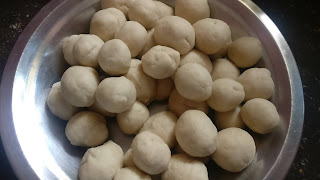 |
| पानी रोटी (Pani Roti) |
Pani
roti directly translates to water bread in English but is far more different
than the literal meaning. Some people refer it as just Panroti but again
panroti is another North Indian recipe where a bread is made using the leaves
of pan plants.
What
is Pani roti?
Pani
roti is a traditional Nepali cuisine popularly emblematized as a dish of the
poor but in fact, is not. The logic behind this might be that we don't have to
cook multiple dishes when there is Pani roti. That means when we cook rice,
then definitely you will need curry, daal and pickles. Pani roti is a one-off
dish. You cook it and have it. There is no another complementary dish required.
As the name suggests, Pani roti, of course does have enough water or liquid
that serves as daal or curry. It has balls of wheat flour as a solid staple.
 |
| These flour balls of wheat are added in the cooked curry to cook further |
How
is Pani roti cooked?
The
preferred utensil for cooking pani roti is a pressure cooker. First, you cook
curry. For example you cook beans by pressurizing in a cooker just in the
regular way. After the beans are cooked, you add the balls of wheat flour rolled
in small sizes. According to the quantity and size of the wheat rolls, it takes
at least half an hour to one full hour to properly cook the wheat rolls.
Dietary Value of Pani roti
Curry
can be of any vegetable. So, cook at your choice but gobi (karkala) or unripe
pumpkin serves as the best combination as per taste. At least add some greens. When
you eat pani roti in the morning you don't have to run for the lunch during
afternoons. This gives you enough power for 12 hours.
Social Norms about Pani roti
The
cooked pani roti might not be so pleasant to your eyes on seeing. But it is
potent to quench your hunger for longer. Hence, it is all-in-one diet
customarily eaten by Nepalese villagers when there are a lot of farming works
to do and not enough time for cooking and washing utensils. In the past, people
would ridicule a family who binge upon pani roti so, oftentimes, people would
eat it quite behind closed doors. But gone are the days because it is nowhere
that you can find people eating traditional pani roti. It is rarer than even
Dhindo. So, nowadays when you happen to eat pani roti, it's celebrated.




0 Comments